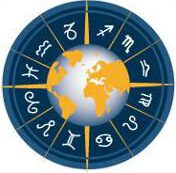Aquarius as the corresponding sign of Maya culture. 60,000 previously unknown Maya structures found in Guatemala dating over a period of 1500 years or more discovered in what once was the Tikal metropolitian region with both astrgeographical coordinates in Aquarius.
Related articles: The Pyramid of Kukulcán at Chichén Itzá, The Maya Ruins at Palenque The Great Pyramid of Cholula in astrology, The Astrogeographical Position of Mexico City, Astrogeographic positions of the largest cities worldwide, Astrogeographical positions of the largest cities in 100 CE, The Origin of the Inca Gold – the Pyramid City of Túcume. Templo Mayor in Mexico City and the Astrogeographical Position of Tenochtitlan,
Aquarius as the corresponding sign of Maya culture

In a “major breakthrough” in the history of Maya archaeology, researchers have identified the ruins of more than 60,000 houses, palaces, elevated highways, and other human-made features that have been hidden for centuries under the jungles of what once could have been the larger metropolitain region of Tikal near the border between todays Guatemala and Mexico. The discovery suggests that many more structures could exist near other larger Maya urban centers such as Calakmul, Chitchen Itza and El Mirador.
From the National Geographic article: “Using a revolutionary technology known asLiDAR (short for “Light Detection And Ranging”), scholars digitally removed the tree canopy from aerial images of the now-unpopulated landscape, revealing the ruins of a sprawling pre-Columbian civilization that was far more complex and interconnected than most Maya specialists had supposed.The LiDAR images make it clear that this entire region was a settlement system whose scale and population density had been grossly underestimated,” said Thomas Garrison, an Ithaca College archaeologist and National Geographic Explorer who specializes in using digital technology for archaeological research. Garrison is part of a consortium of researchers who are participating in the project, which was spearheaded by the PACUNAM Foundation, a Guatemalan nonprofit that fosters scientific research, sustainable development, and cultural heritage preservation.”
The Tikal Metropolitain Region has both coordinates in Aquarius
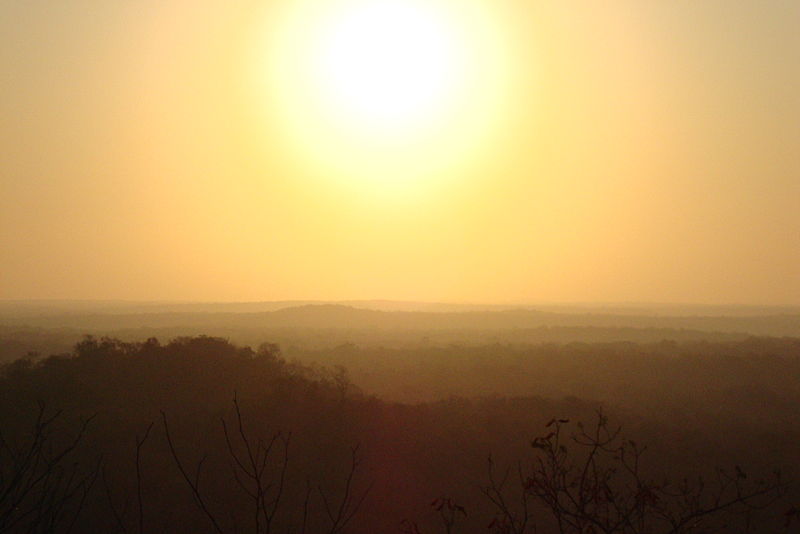
The project area of the most recent LIDAR scans covered 2.100 km2 of the 21,602.04 km2 Maya Biosphere Reserve in the Petén region in northern Guatemala. The new data reveales large numbers of man made structures including a system of roads built on dams that connected the metropolitan region around the major urban center of Tikal with other places of the area. such as Uaxactun, Holmul and Xmakabatun and probably the former metropolitain region opf what is supposed to gave been the largest of all Maya agglomerations El Mirador located around 70 km north of Tikal.
Astrogeographic position of the area of the new LIDAR scan as presented in February 2018 in the Maya Biosphere Reservate for morphogenetic field level 1 which describes the supraregional topics of the area and the region of Tikal and the Maya Biosphere Reserve: the coordinates for the astrogeographical longitude as well as for the latitude stretch in the first degrees of creative, innovative air sign Aquarius. For many astrologers such strong resonance of Maya sites with air sign Aquarius is certainly not unexpected. Aquarius resonates with the importance of particularly tall (sky-orientated) temple buildings in Maya culture. The exact resonance degrees coordinates of the Tikal archeological site and supposed town center are 5° and 7° Aquarius.

Aquarius as the first astrogeographical resonator of Maya culture
To be precise the comparison of the planetary transit positions of the National geographic publication with the astrogeographical coordinates of the LIDAR scan project area are to be examined as an exppression of the resonance with the date of the presentation of the new data in the first place.
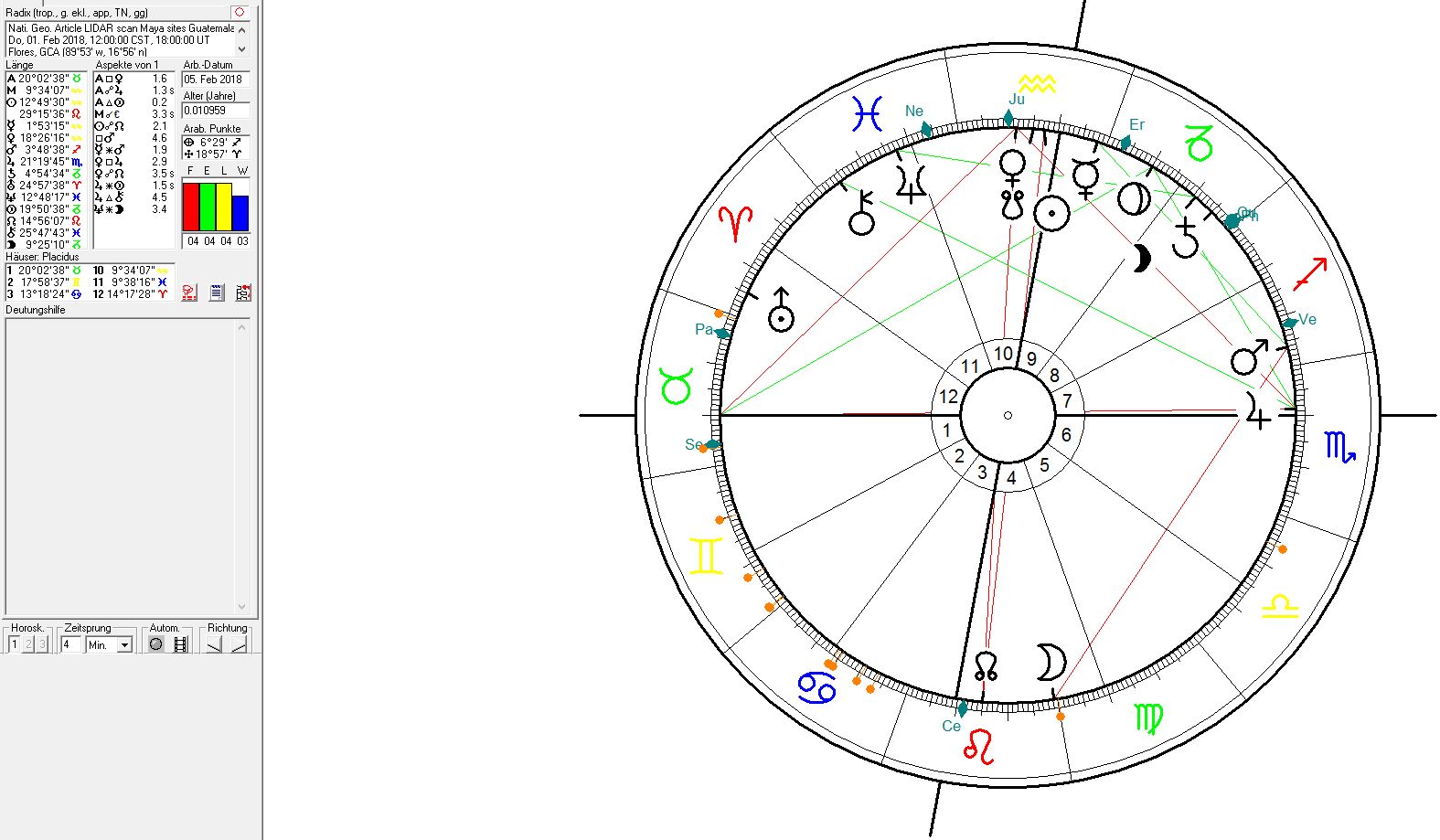
National Georaphic Article on the LIDAR scans of Maya sites near Tikal in the Maya Biosphere Reserve in Guatemala calculated for 1 Feb 2018 at 12:00 and for Flores, Guatemala
National Geographic published the article on 1 February – a day after the messenger Mercury the ruler of news and information had ingressed into Aquarius entering in direct resonance with the astrogeographical position of the LIDA scan project area through conjunction.
Another really convincing and extremely intense transit constellation too was in Aquarius: the South Node indicator for the historical inheritance we are dealing with was at 14°56`Aquarius having just passed the very center of Aquarius. From this transit alone we could concludea probability of the maya culture representing the very center of Aquarian cultural inheritance. Even more so as the South Node was accompanied by the Sun and Venus and actually exactly on the half sum between the two. The Sun as ruler of centralistic fire sign Leo (kingdom) and Venus as ruler of earth sign Taurus (market places, food) represent the strongest astrological indicators for the gravitation exerted by urban centers. Taurus being the most frequent astrogeographical factor for the sites of the first foundation of urban centers.
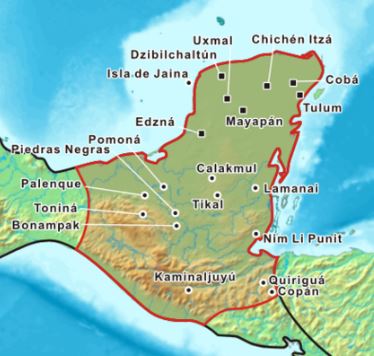
The astrogeographical longitude coordinates for the area of settlement of the Maya are divided into a west half in Capricorn with Palenque, Tonina and Bonampak and the east half in Aquarius with the biggest cities as Tikal, Caracol and El Pilar. image: Kmusser, GNU/FDL
The astrogeographical and morphogenetical resonance of the Tikal area with Aquarius is no exemption. In fact the astrogeographical longitude coordinates of the largest urban centers of the whole mayan civilisation between Yucatan in the North and the Honduras-El Salvador region in the south are mostly located in Aquarius – making the sign the most important factor for Maya society and culture from an astrogeographical point of view. The astrogeographical longitude coordinates for the area of settlement of the Maya can be divided into a west half in Capricorn with Palenque, Tonina and Bonampak and the east half in Aquarius with the biggest cities as Tikal, Caracol and El Pilar.
Here comes a list of the most important urban centers in the history of Pre-Columbian South and Mezoamerica. It reveals that the air signs Gemini, Libra and Aquarius seem to have played an overwhelmingly important role among the regions in which the central cities of the pre-columbian civilizations developed. It may be concluded that the air signs have stimulated the development of civilizations through the relative openness to flexibility, new ideas, language, communication, exchange and progress of technological development,

Features of Maya culture that relate to Aquarius
What are the particular features of Maya and other South- and Mesoamerican cultures that could serve to classify them as typical Aquarius related cultures? I have to say that such clssification and attempted typology of nations, tribes or cultural identities is so frequently misleading that I feel it should rely on astrological experience in chart reading rather than the judgement from theoretically projected categories. This is the basis of all methods in systemical astrogeographical field measurement and field studies as well.
From the perspective of European astrological experience the Americas both South and North appear almost naturally related to Aquarius more than any other sign. This may well be due to the relatively shorter periods of known history of civilizations on the two american continents. This is because Aquarius always seems the sign of periods of breakthrough in techchnological, social and cultural developments. But even that is no secure basis for a solid astrological classification. A strong astrogeographical example for that is the rise of and fall of the Roman Empire, which in many ways represented the climax of technological and organisational achievements of all times before the modern area. It´s capital city Rome had both astrogeographical coordinates in Gemini the sign of technology and the readiness for learning.
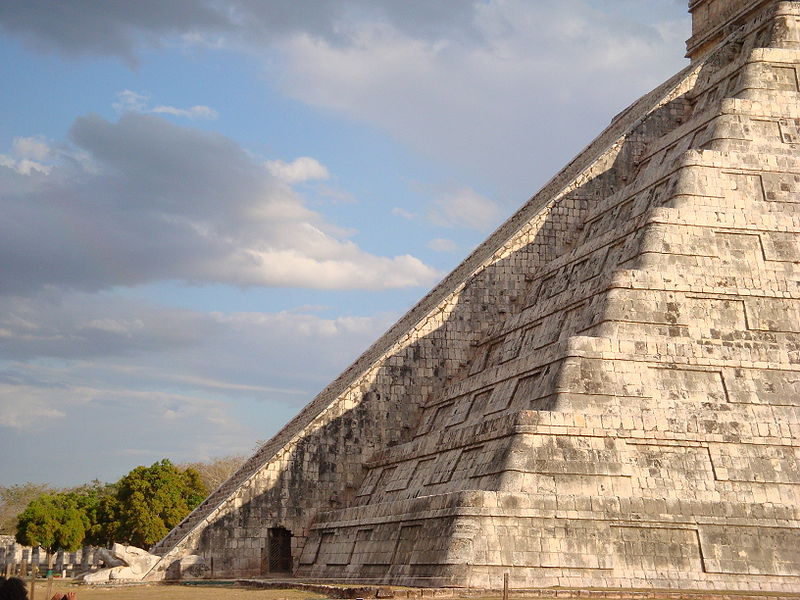
The depicition of the descent of the feathered serpent god (Quetzalcoatl) from the sky to the earth during the spring equinox can be understood as an expression of the strong correspondence of the historical Mesoamerican and South American civilizations with air sign Aquarius the sign of the sky. Compare: Chichen Itza in Aquarius with Virgo.
The Feathered Serpent did not originate in Maya civilization. It´s roots have been traced back to the earliest known mexican culture the Olmecs (circa 1400-400 BCE) where it`s depicted image may have developed out of a crested rattlesnake entitiy. The Olmec culture had its origin in the Gulf lowlands to the west of the Mayan region in today`s mexican states of Veracruz and Tabasco.
Though sometimes interpreted as a trait of the correspondence with Aquarius the rapid and complete decline of Maya culture is no distinguishing factor from the decline of so many other advanced civilizations (Harappa, Mohenjo Daro, Babylon, Rome a.s.o.).
